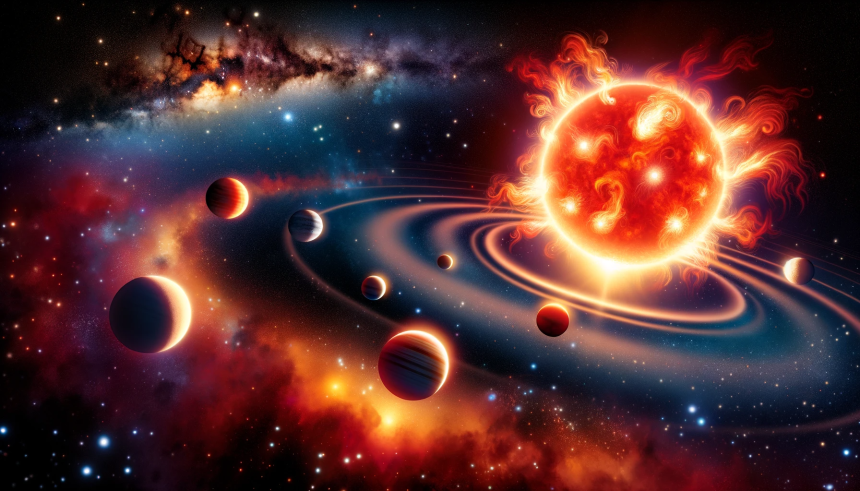Imagine a solar system full of six young planets around a boisterous star that is just 4% the size of our Sun. NASA’s Transiting Exoplanet Survey Satellite (TESS) just found this amazing image, providing a window into the turbulent early stages of our own planetary system that occurred billions of years ago.
This cosmic family, also known as the “TOI-1136” system, is located in the constellation Hercules, around 270 light-years distant. Known as TOI-1136b, the star is a red dwarf and is just 4 billion years old, a cosmic child in comparison to our Sun, which is 4.6 billion years old. However, this star makes up for its small size with its high activity.
Tara Fetherolf, a team member and visiting professor of astrophysics at the University of California, Berkeley, clarified in a statement that “young stars misbehave all the time.” “They’re very active, just like toddlers.”
This stellar fury is a great target for TESS’s planet-hunting mission since it often emits flares and explosive outbursts. TESS looks for exoplanets by observing the characteristic fading of a star’s brightness as a planet passes in front of it, a phenomenon known as transit.
TESS observed six transiting planets around TOI-1136b, forming a real planetary conga line around the active star. With orbital periods ranging from approximately 2.4 to 16.2 days, the six confirmed planets vary in size from around 1.4 to 4.4 times that of Earth. This implies that they are all closely clustered together, playing a cosmic musical chairs game as they speed around their blazing sun.
“Because few star systems have as many planets as this one does, it’s getting close in size to our own solar system,” Fetherolf said. “It’s both similar enough and different enough that we can learn a lot.”
Not only is the finding of the TOI-1136 system remarkable due to its massive planet count, but it also holds promise for providing insights into the formation and evolution of planetary systems. Investigating these young, active planets may provide information about the early solar system, when our Sun was still a boisterous infant.
According to main author Maximilian Guenther, “this system is like a Rosetta Stone for understanding how these compact, multi-planet systems form,” in a statement released with the study’s publication in The Astrophysical Journal Letters. “By studying this system, we can learn more about the potential habitability of these kinds of planets, and how common they might be in the galaxy.”
In addition, the researchers make a suggestion that a seventh planet could be hiding in the system’s periphery. Should this seventh planet be verified, it would surpass all the others in size, with an estimated circumference 6.2 times greater than Earth’s.
The continued search for exoplanets and the extraordinary capability of TESS are shown by the finding of the TOI-1136 system. This cosmic baby and its planetary offspring may hold fresh insights about the creation and development of planetary systems, as well as the possibility of extrasolar life, with further observations and research.
Therefore, keep in mind that, someplace in space, a naughty baby star is encircled by a busy family of exoplanets, each with a unique tale to tell the next time you look up at the night sky. And one cosmic mystery at a time, we’re gradually beginning to solve those mysteries with the help of NASA’s brave space telescopes.








